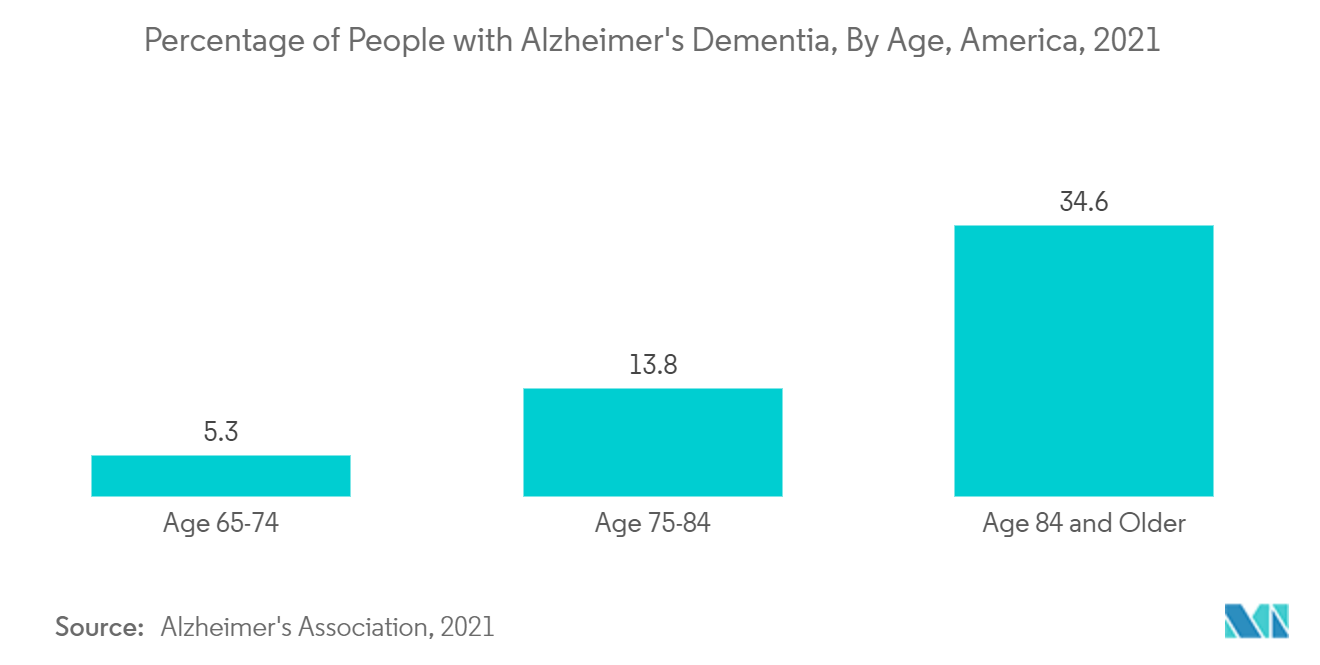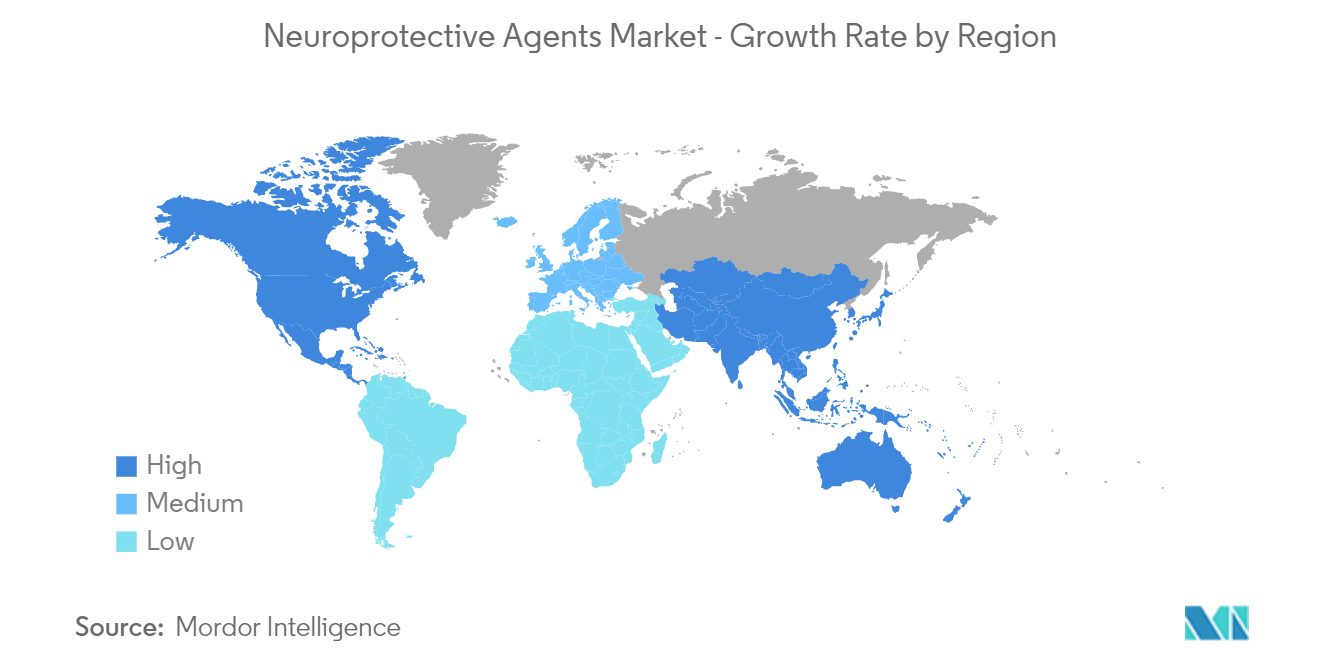Market Trends of Global Neuroprotective Agents Industry
The Alzheimer's disease Segment is Expected to Hold a Major Market Share in the Neuroprotective Agents Market
The incidence of Alzheimer's has been constantly increasing, and it is expected to continue increasing in the coming decades. According to the World Health Organization, 2020, nearly 50 million people across the world are living with Alzheimer's disease and other dementias, and the number is expected to reach more than 152 million by 2050. Additionally, according to a research article published in Ageing Research Reviews, 2020, Alzheimer's disease progression increases with aging and is the fifth-largest contributor to the global burden of diseases, accounting for more than USD 1 trillion in 2018, globally.
Furthermore, as per England: Recorded Dementia Diagnosis Data May 2020, one million people in the United Kingdom are projected to be living with dementia by 2025, which may increase to two million by 2050. Among all dementia conditions, 60-70% of cases account for Alzheimer's disease. As a result, there is a large market for Alzheimer's treatment, which would encourage the development of neuroprotective medications. Depression, memory loss, loss of inhibitions, and issues with thinking and reasoning are all classic Alzheimer's symptoms. Physical checks, blood tests, brain imaging, mental status, and neuropsychological testing are commonly used to diagnose it. Alzheimer's disease is becoming more common as the global population ages, which increases the disease's incidence and provides opportunities for growth in the Alzheimer's treatment market.
According to the United Nations' World Population Prospects (WPP), the number of people living with Alzheimer's disease is expected to reach 1.4 billion by 2030, with an annual growth rate of 3%. However, medications for Alzheimer's therapy are in development and are projected to launch in the near future, boosting the market growth. The growth of Alzheimer's disease treatment and the market is attributed to a rise in demand for targeted therapies, an increase in research and development activities for the development of novel drugs and therapies, an increase in cases of Alzheimer's disease among the population, and an increase in expenditure for the development of healthcare infrastructure.
Other factors driving market growth include rising expenditure on healthcare infrastructure development, rising public awareness about the disease in developing regions, increased government initiatives to promote awareness in backward areas, and an increase in the strategic collaboration rate among market players.

North America is Expected to Hold a Significant Share in the Market and Expected to do Same in the Forecast Period
North America is expected to hold a major market share in the global Neuroprotective Agents Market. According to the Parkinson's Foundation, nearly one million people were expected to be living with Parkinson's disease in the United States in 2020, which is more than the combined number of people diagnosed with multiple sclerosis, muscular dystrophy, and Lou Gehrig's disease. The number is expected to rise to 1.2 million by 2030. Approximately 60,000 Americans are diagnosed with Parkinson's disease each year, with a collective direct and indirect cost of Parkinson's, including treatment, social security payments, and lost income, estimated to be nearly USD 52 billion per year in the United States alone. More than 10 million people worldwide are living with PD. Therefore, an increasing patient population is expected to contribute to the growth of the studied market in the region.
According to the World Health Organization's (WHO) and Pan American Health Organization's (PAHO) May 2020 survey, psychotherapy and counseling services were partially or wholly disrupted in more than half of North American countries (60.7%), while diagnostic and laboratory services at mental health facilities were disrupted in 11 of 28 countries (39.3%). COVID-19 has had a considerable impact on MNS services throughout the Region of the Americas, according to the survey. However, the types of MNS services and the extent to which they have been disrupted differ significantly. Outpatient and community-based services (mainly home and daycare services) were impacted considerably in most countries.
Government funding and support for research activities are increasing due to the rising burden of the disease. The United States holds the largest share of the global brain monitoring market. According to the United States National Institute of Mental Health (NIMH) July 2020, it has been estimated that one in four American adults have a diagnosable mental disorder in any given year, and nearly 6% suffer from severe disabilities. The same source has also stated that the total cost of severe mental illness in the United States exceeds USD 317 billion per year.
Thus, the market is expected to witness significant growth during the forecast period due to the abovementioned factors.



